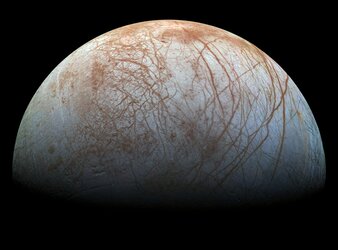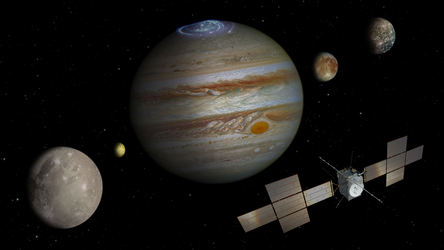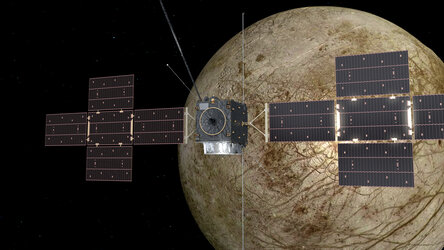Accept all cookies Accept only essential cookies See our Cookie Notice

About ESA
The European Space Agency (ESA) is Europe’s gateway to space. Its mission is to shape the development of Europe’s space capability and ensure that investment in space continues to deliver benefits to the citizens of Europe and the world.
Highlights
ESA - United space in Europe
This is ESA ESA facts Member States & Cooperating States Funding Director General Top management For Member State Delegations European vision European Space Policy ESA & EU Space Councils Responsibility & Sustainability Annual Report Calendar of meetings Corporate newsEstablishments & sites
ESA Headquarters ESA ESTEC ESA ESOC ESA ESRIN ESA EAC ESA ESAC Europe's Spaceport ESA ESEC ESA ECSAT Brussels Office Washington OfficeWorking with ESA
Business with ESA ESA Commercialisation Gateway Law at ESA Careers Cyber resilience at ESA IT at ESA Newsroom Partnerships Merchandising Licence Education Open Space Innovation Platform Integrity and Reporting Administrative Tribunal Health and SafetyMore about ESA
History ESA Historical Archives Exhibitions Publications Art & Culture ESA Merchandise Kids Diversity ESA Brand Centre ESA ChampionsLatest
Space in Member States
Find out more about space activities in our 23 Member States, and understand how ESA works together with their national agencies, institutions and organisations.
Science & Exploration
Exploring our Solar System and unlocking the secrets of the Universe
Go to topicAstronauts
Missions
Juice Euclid Webb Solar Orbiter BepiColombo Gaia ExoMars Cheops Exoplanet missions More missionsActivities
International Space Station Orion service module Gateway Concordia Caves & Pangaea BenefitsLatest
Space Safety
Protecting life and infrastructure on Earth and in orbit
Go to topicAsteroids
Asteroids and Planetary Defence Asteroid danger explained Flyeye telescope: asteroid detection Hera mission: asteroid deflection Near-Earth Object Coordination CentreSpace junk
About space debris Space debris by the numbers Space Environment Report In space refuelling, refurbishing and removingSafety from space
Clean Space ecodesign Zero Debris Technologies Space for Earth Supporting Sustainable DevelopmentLatest
Applications
Using space to benefit citizens and meet future challenges on Earth
Go to topicObserving the Earth
Observing the Earth Future EO Copernicus Meteorology Space for our climate Satellite missionsCommercialisation
ESA Commercialisation Gateway Open Space Innovation Platform Business Incubation ESA Space SolutionsLatest
Enabling & Support
Making space accessible and developing the technologies for the future
Go to topicBuilding missions
Space Engineering and Technology Test centre Laboratories Concurrent Design Facility Preparing for the future Shaping the Future Discovery and Preparation Advanced Concepts TeamSpace transportation
Space Transportation Ariane Vega Space Rider Future space transportation Boost! Europe's Spaceport Launches from Europe's Spaceport from 2012Latest

Blood-red scars and veins on Europa
Thank you for liking
You have already liked this page, you can only like it once!
Jupiter’s moon Europa is a bizarre place. There is something undeniably biological about this image, sent back by NASA’s Galileo spacecraft – the moon is scarred by deep red gashes, resembling the vibrant red veins flowing across a human eye.
Several probes have flown closely past Europa in the past. Galileo explored it in detail during its many years orbiting Jupiter, from 1995 to 2003.
Galileo’s data supported the theory that Europa hosts a deep underground liquid ocean, and clay-like minerals were detected in the moon’s icy crust. The probe also found evidence for an ‘exosphere’ around Europa, as well as around the Jovian moons Ganymede and Callisto. This exosphere is a thin atmosphere surrounding the moons where molecules remain gravitationally trapped.
Europa, Ganymede and Callisto will be explored further by ESA’s JUpiter ICy moons Explorer (Juice) mission when it reaches the system in 2030. Europa is also earmarked for further attention by NASA, who will launch their mission some time in the 2020s.
Despite their unnerving appearance, the red scars criss-crossing Europa are, of course, not biological. They are actually cracks and ridges marking weak lines within the moon’s ice crust, emphasised and exacerbated by the swelling and falling of tides due to Jupiter’s gravitational pull. Some of these ridges are thousands of kilometres long. The startling colour is due to contaminating minerals rising from beneath the icy crust, possibly salts from the underground ocean.
The regions of mottled red are chaotic terrain, parts of the moon’s surface with disrupted icy material that has been broken and shifted around.
This strongly enhanced colour picture, from the NASA Photojournal collection, combines images taken using violet, green and near-infrared filters. A more natural colour version is also available. The data were collected in 1995 and 1998.
-
CREDIT
NASA/JPL/University of Arizona -
LICENCE
ESA Standard Licence

Chaos on a watery world

New evidence of watery plumes on Jupiter’s moon Europa

Exploring Jupiter

Juice flyby of Europa (artist’s impression)















 Germany
Germany
 Austria
Austria
 Belgium
Belgium
 Denmark
Denmark
 Spain
Spain
 Estonia
Estonia
 Finland
Finland
 France
France
 Greece
Greece
 Hungary
Hungary
 Ireland
Ireland
 Italy
Italy
 Luxembourg
Luxembourg
 Norway
Norway
 The Netherlands
The Netherlands
 Poland
Poland
 Portugal
Portugal
 Czechia
Czechia
 Romania
Romania
 United Kingdom
United Kingdom
 Slovenia
Slovenia
 Sweden
Sweden
 Switzerland
Switzerland

























